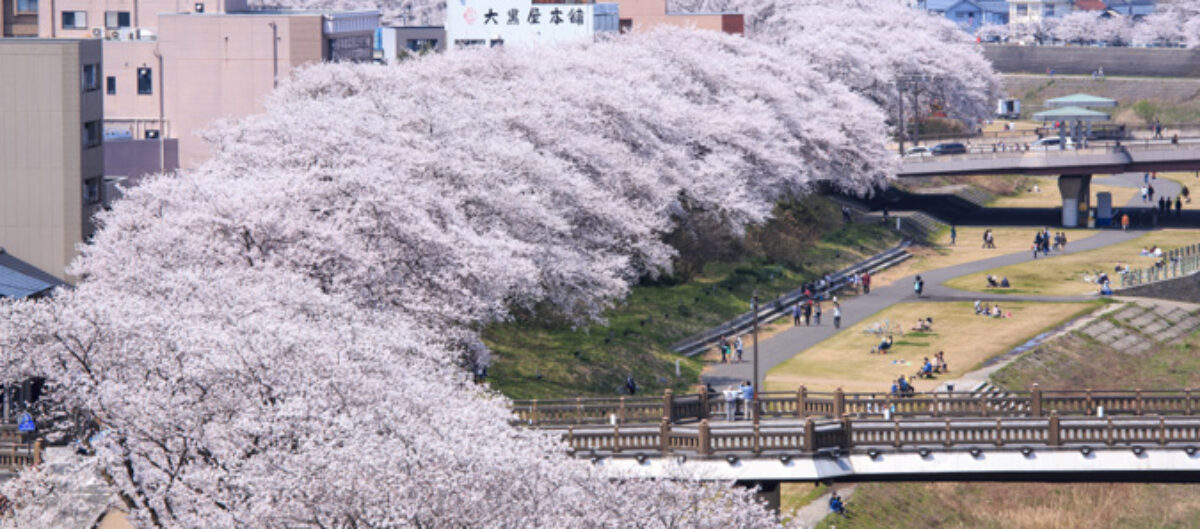
April/5/2019
Cherry blossoms are very special for Japanese people. Every year, when spring is approaching, they get excited. The timing of the flowering of the cherry blossoms is forecasted by the Japan Weather Association. A lot of people in Japan look forward to seeing the flowers.
Motoori Norinaga(1730-1801), a famous Japanese classical scholar, wrote a poem about the Japanese spirit and the cherry blossoms:
Isles of blessed Japan!
Should your Yamato spirit
Strangers seek to scan,
Scented morning’s sunlit air
Blows the cherry wild and fair!
(If you asked me what the spirit of people in Japan is, I’d say that it’s a beautiful flower of the wild cherry tree lit by the morning sun.)
When did cherry blossoms become special for Japanese people?
It’s said that cherry blossoms became an important part of Japanese culture in the 9th century. At first, only the Imperial family enjoyed cherry blossom viewing. The tradition spread gradually to the nobility and warriors. In the 18th century, ordinary people began to enjoy viewing the flowers.
There’s a mountain called Mt. Asuwa that you can walk to in 20 minutes from Fukui Station. On the mountain, there’s a shrine called Asuwa Shrine where you can see a 370-year-old Japanese weeping cherry tree.


The other day at 2 p.m., about 30 people, including a foreign man, were enjoying looking at the flowers from various angles within the grounds of the shrine. The flowers were white. The tree has a lot of long branches, and the branches had flowers on every surface. It seemed it had a lot of energy, and I couldn’t believe that it’s 370 years old. Some people said, “It’s beautiful!” and “This is great!”
Then, I chanced upon a young couple who were wearing traditional Japanese clothing and were walking under a traditional Japanese umbrella. They took photos in front of the tree. I thought that the couple went nicely with the weeping cherry tree.

At 8 p.m., I went back to the shrine. On the way, there’s a hill called Atago Hill, which has 145 steps. On two sides of the hill, paper-framed lamps were placed in a line, and the lights lit the way for people to walk. It was beautiful.



About 50 people were enjoyed viewing the flowers in the shrine. Some were drinking and eating while sitting on vinyl sheets. The lit-up tree looked bigger. I gazed at the flowers on the tree while drinking hot coffee from a can. I realized that the tree is 370 years old, but it has only bloomed 300 times. It’s an obvious thing, but cherry trees bloom only once a year.
At 4:40 a.m. the next day, I went to the shrine again. It was very dark outside, and I saw a lot of stars in the sky. There was only one man there praying in the shrine. I only heard the sound of the man’s and my footsteps.
Then, three elderly women came with flashlights. They shone them on the cherry blossoms. They said that they were beautiful. I’d seen people who view the cherry blossoms with their own lights for the first time.
At 5:30 a.m., the sun came up in the sky. I also thought the weeping cherry tree in the morning was nice.


I realized that you can enjoy looking at people who are viewing the cherry blossoms as well as the blossoms themselves.
The cherry blossoms of Asuwa River are near to the 370-year-old weeping cherry tree. I recommend that you see both at the same time.
The cherry blossoms bloom for about two weeks, but you can only see them in full bloom for a few days. Please check the cherry blossom forecasts and weather reports before coming to Fukui. This is the cherry blossom forecast in English.
To be continued(Cherry Blossoms along the Asuwa River: Asuwa Sakura Tunnel)
(References)
「Bushido The Soul of Japan」 (Inazo Nitobe)(IBCパブリッシング)
「桜信仰と日本人」(監修:田中秀明)(青春出版社)
「日本一の桜」(丸谷馨)(講談社)
「桜」(勝木俊雄)(岩波書店)
